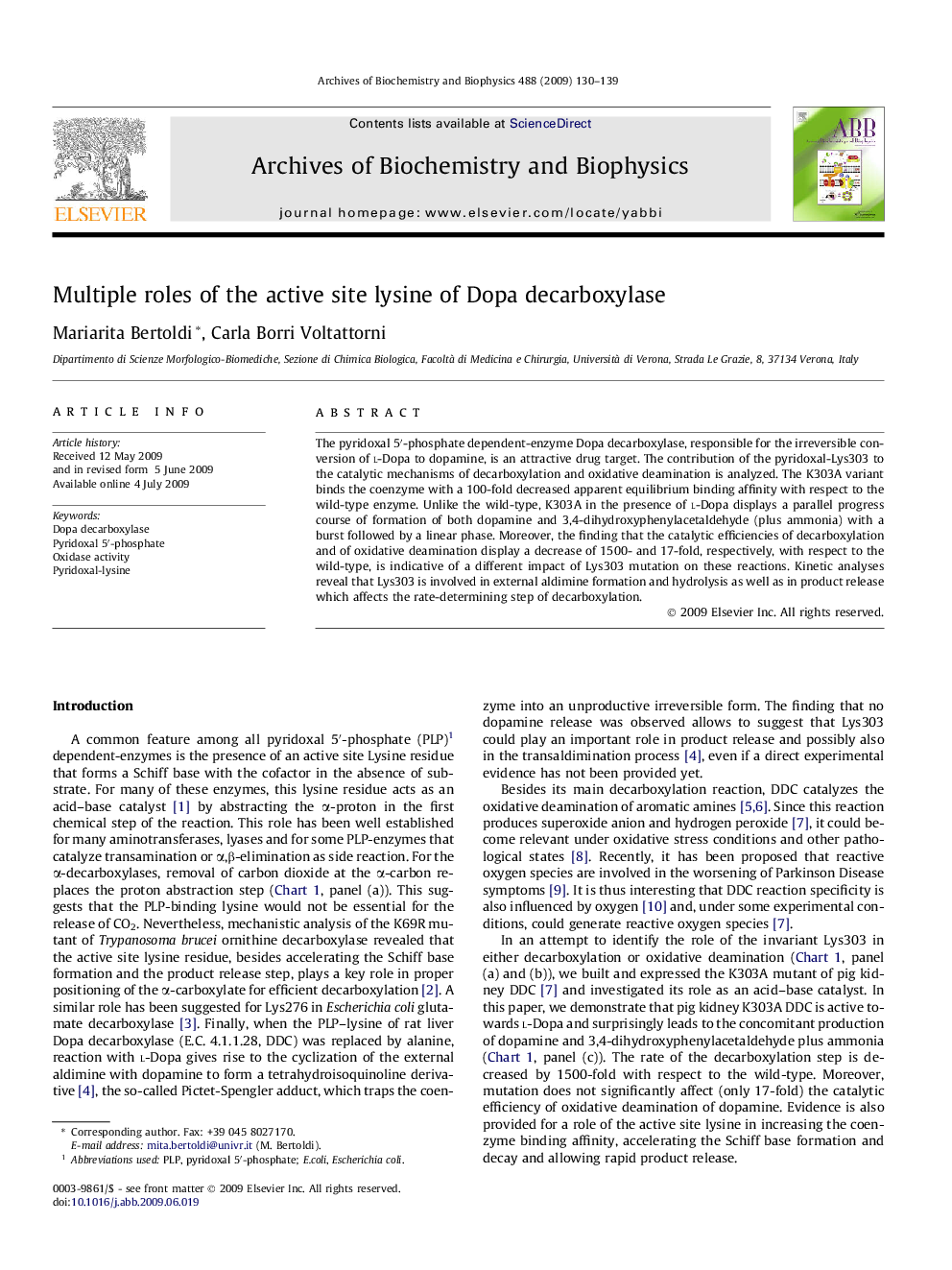| Article ID | Journal | Published Year | Pages | File Type |
|---|---|---|---|---|
| 1926299 | Archives of Biochemistry and Biophysics | 2009 | 10 Pages |
The pyridoxal 5′-phosphate dependent-enzyme Dopa decarboxylase, responsible for the irreversible conversion of l-Dopa to dopamine, is an attractive drug target. The contribution of the pyridoxal-Lys303 to the catalytic mechanisms of decarboxylation and oxidative deamination is analyzed. The K303A variant binds the coenzyme with a 100-fold decreased apparent equilibrium binding affinity with respect to the wild-type enzyme. Unlike the wild-type, K303A in the presence of l-Dopa displays a parallel progress course of formation of both dopamine and 3,4-dihydroxyphenylacetaldehyde (plus ammonia) with a burst followed by a linear phase. Moreover, the finding that the catalytic efficiencies of decarboxylation and of oxidative deamination display a decrease of 1500- and 17-fold, respectively, with respect to the wild-type, is indicative of a different impact of Lys303 mutation on these reactions. Kinetic analyses reveal that Lys303 is involved in external aldimine formation and hydrolysis as well as in product release which affects the rate-determining step of decarboxylation.
